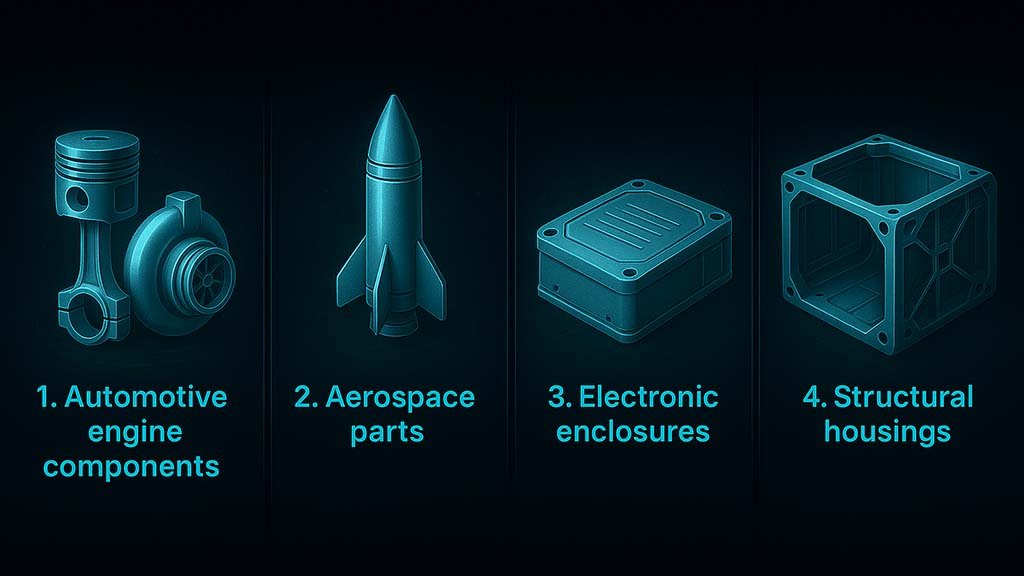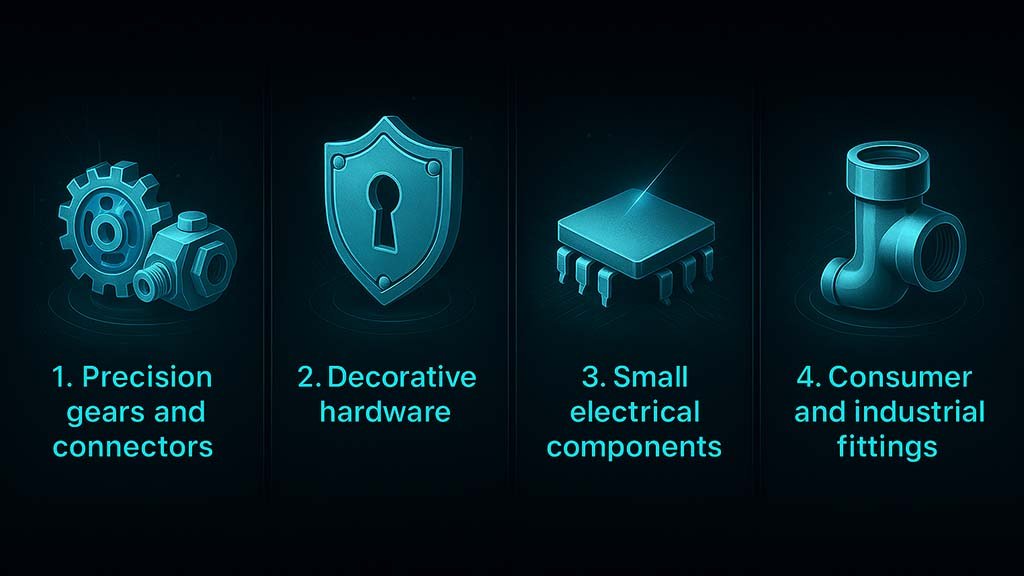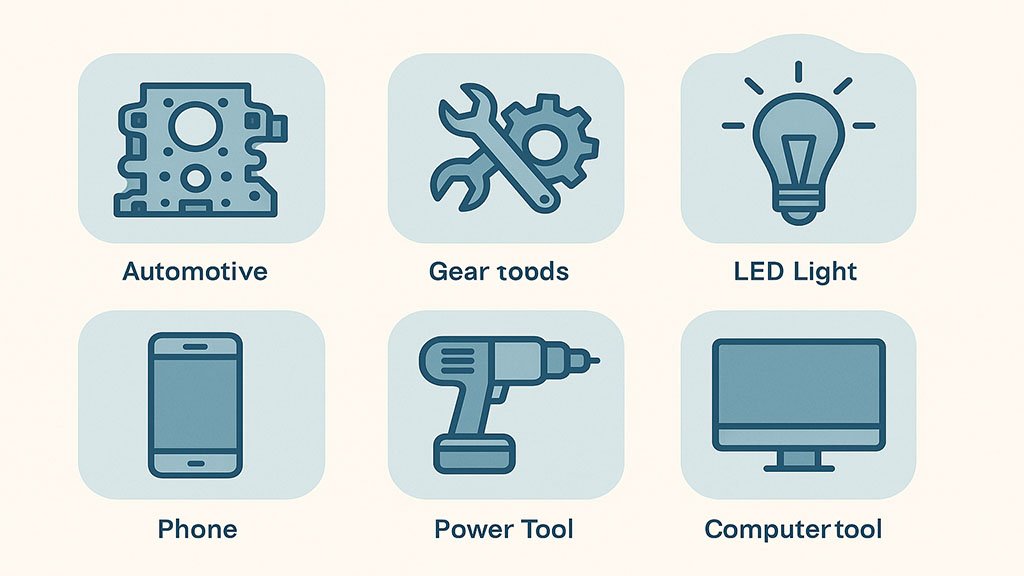When it comes to producing precision metal parts, Aluminum Die Casting and Zinc Die Casting are two of the most trusted methods used across various industries. Both processes involve injecting molten metal into a steel mold or die under high pressure to create intricate and dimensionally accurate components. However, the performance, properties, and cost-efficiency of aluminum and zinc differ significantly.
Understanding the differences between aluminum and zinc die casting is critical when choosing the right material and process for your product design and industrial needs. In this article, we break down the key differences to help you make an informed decision.
Aluminum Die Casting uses lightweight aluminum alloys that are ideal for high-strength applications where weight reduction is essential. These alloys are commonly used in the automotive, aerospace, and electronics industries due to their high corrosion resistance and excellent thermal conductivity.
Zinc Die Casting, on the other hand, utilizes zinc alloys such as Zamak 3 and Zamak 5. Zinc is known for its superior dimensional accuracy, toughness, and the ability to create highly detailed components. Zinc Die Casting Manufacturers in India often prefer zinc for smaller, more intricate parts used in electronics, home hardware, and industrial components.
One of the most noticeable differences between these two materials is their weight.
In terms of strength, both materials perform well, but in different ways. Aluminum offers excellent tensile strength, especially at higher temperatures. Zinc offers high impact strength and is more malleable, which helps in complex molding and reduces the risk of cracking during casting.
Zinc Die Casting excels in producing parts with tight tolerances, thin walls, and fine details. The lower melting point of zinc (~420°C) allows for better flow into intricate mold designs, resulting in less need for secondary machining.
Aluminum Die Casting also produces precise components, but it may require additional post-processing to achieve the same level of detail and surface finish as zinc. This makes zinc more suitable for components where finish quality and dimensional precision are top priorities.
Aluminum is naturally resistant to corrosion due to the formation of an oxide layer on its surface. This makes Aluminum Die Casting ideal for outdoor or marine applications, as well as for parts that need to withstand high-temperature environments.
Zinc also provides good corrosion resistance, especially when coated or plated. However, zinc has a lower melting point, which limits its application in high-heat conditions compared to aluminum.
Cost is often a determining factor in material choice. While Aluminum Die Casting offers performance advantages in certain applications, it typically requires higher energy consumption and shorter tool life due to the elevated temperatures used in the process.
In contrast, Zinc Die Casting offers longer die life, faster cycle times, and lower overall production costs, making it a preferred option for high-volume manufacturing.
Aluminum Die Casting is commonly used for:

Zinc Die Casting is ideal for:

Both Aluminum Die Casting and Zinc Die Casting offer unique advantages that suit different industrial needs. When evaluating which to choose, consider factors such as part size, mechanical requirements, production volume, and budget.
For intricate, small, and cost-efficient parts, Zinc Die Casting is the way to go—especially when working with leading Zinc Die Casting Manufacturers in India. For lightweight, high-strength, and heat-resistant components, Aluminum Die Casting is the superior option.
Looking for a trusted partner for your casting needs? OME Verma Industries, a Leading Aluminium Die Casting Manufacturer in India, delivers high-quality solutions with precision engineering, advanced technology, and industry-proven expertise.
In the ever-evolving world of manufacturing, aluminium die casting has emerged as a cornerstone technology that continues to shape the modern products we rely on every day. From smartphones and vehicles to home appliances and medical equipment, this precise and efficient manufacturing method plays a crucial role in creating durable, lightweight, and complex components.
But what exactly is aluminium die casting, and why is it so influential in shaping today’s products?
Aluminium die casting is a process that involves injecting molten aluminium into a mold cavity under high pressure. These molds, known as dies, are typically made from hardened tool steel and are capable of producing thousands of identical castings with high dimensional accuracy and excellent surface finishes.
This method allows manufacturers to create complex shapes that would be difficult or impossible to achieve using other fabrication methods. The end result is a part that is strong, corrosion-resistant, and cost-effective—ideal for mass production.
Aluminium is one of the most widely used materials to create die casting products due to its excellent properties. It is lightweight, non-corrosive, and has good thermal and electrical conductivity. More importantly, aluminium can be easily recycled, making it an environmentally friendly choice for sustainable manufacturing.
Its lightweight nature makes it perfect for the automotive and aerospace industries, where reducing weight without compromising strength is crucial for improving fuel efficiency and performance.
Aluminium die casting is used across a wide array of industries. Some key applications include:
Die-cast aluminium parts are found in engines, transmissions, and structural components of vehicles. These parts help reduce vehicle weight and improve fuel efficiency without sacrificing safety or performance.
Die casting is used to manufacture heat sinks, enclosures, and housings for various electronic devices. Aluminium’s thermal conductivity ensures that devices remain cool and perform efficiently.
From kitchen appliances and power tools to lighting fixtures and smartphones, aluminium die casting allows designers to create sleek, durable products with a premium feel.
Precision and hygiene are paramount in the medical field. Die-cast aluminium components are used in diagnostic devices, surgical tools, and imaging equipment, offering strength and cleanliness in critical environments.


With advancements in technology, aluminium die casting is becoming even more efficient and precise. Innovations in simulation software, automation, and material science are driving the industry forward, allowing for even greater design flexibility and shorter production timelines.
As industries push for more sustainable and lightweight solutions, aluminium die casting is expected to play an increasingly important role. The demand for electric vehicles, for instance, is accelerating the need for lightweight aluminium parts to maximize battery performance and vehicle range.
When it comes to aluminium die casting, the quality of the final product depends significantly on the expertise and technology of the manufacturer. For businesses seeking reliable and high-quality aluminium die casting solutions, partnering with a trusted manufacturer is essential.
OME Verma Industries is one of the leading aluminium die casting manufacturers in India, renowned for its commitment to quality, innovation, and customer satisfaction. With state-of-the-art facilities and a highly skilled team, OME Verma Industries delivers precision-engineered components that power the products of tomorrow.
Whether you’re developing cutting-edge electronics, automotive parts, or industrial machinery, OME Verma Industries is your trusted partner for all aluminium die casting needs.